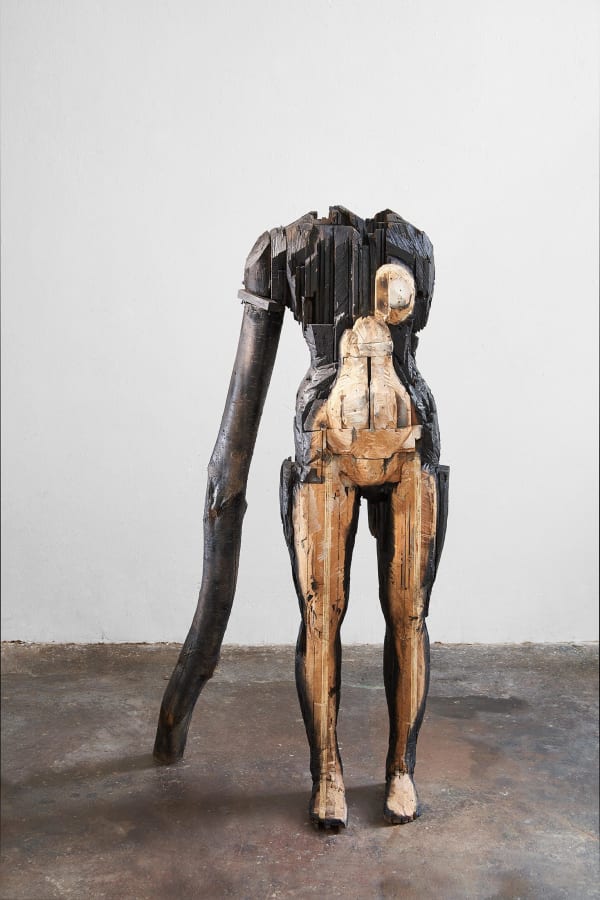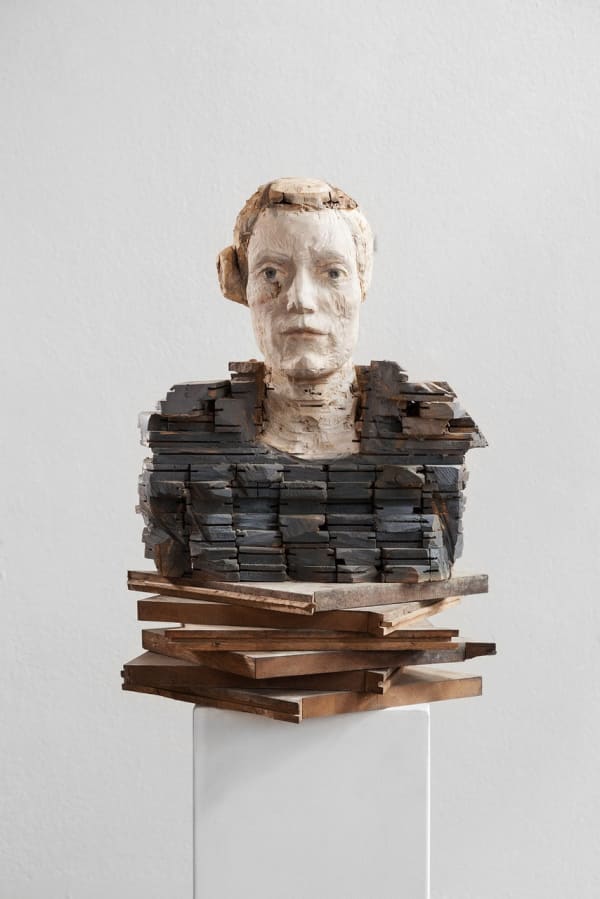Laura Eckert
Laura Eckert (1983) is a young sculptor from Leipzig. In her impressive, figurative images, usually bigger than life, made of wood and stone, people are always central. She focuses on the body and the portrait head, with which she seeks to penetrate into the mutual relationships between cultural, social, biological and psychological aspects. Eckert carves her wooden portrait heads in a robust, but balanced way. For her sculptures she uses recycled materials which she processes into a sculpture. The familiar, everyday material: scrap wood, floorboards, beams, skirting boards, is thus given a new purpose. Eckert glues her wood in layers from which she makes her figures, the different layers contrast with the organically grown material, the contours of the human being are presented as a human construction plan, an abstracted reproduction. Eckert plays with the knots in the wood of the planks and the drilled holes in the beams, the transitions and the transitional states of the wood. Wood offers her the opportunity to show in the image a snapshot from the life cycle of the material between before and after and to use that to mirror the physicality of the human being.
In her busts a relationship with the Renaissance sculpture from the 15th century can be recognized. These idealized portrait busts made of terracota, marble or bronze, like Eckert's wooden copies, are axial and frontal. Here, like Renaissance sculptors, she wants to emphasize the individual. Eckert works with fragments and movable parts that together are made into a complete image. So they do not consist of one piece, but of different parts together. It actually dissolves an image in its materiality; the building plan can be recognized, the manufacturing process can be followed. Eckert does not use models and sketches in the realization of her sculptures. "The heads are simply created as a result of the shape of the piece of wood. Or sometimes from the face of someone I saw in passing, "says Eckert. There are images with a proud posture, fragmentary images, in the middle of the creation process and yet already in decay, naked and incomplete or, on the contrary, completely decorated and almost unrecognizable. The spectator's reflections do not penetrate the matter and must sense the outside, the masking. That something is going on beneath the surface is witnessed by cracks and overgrowth, large indentations and scraped and broken pieces and careless additions to the wood.









